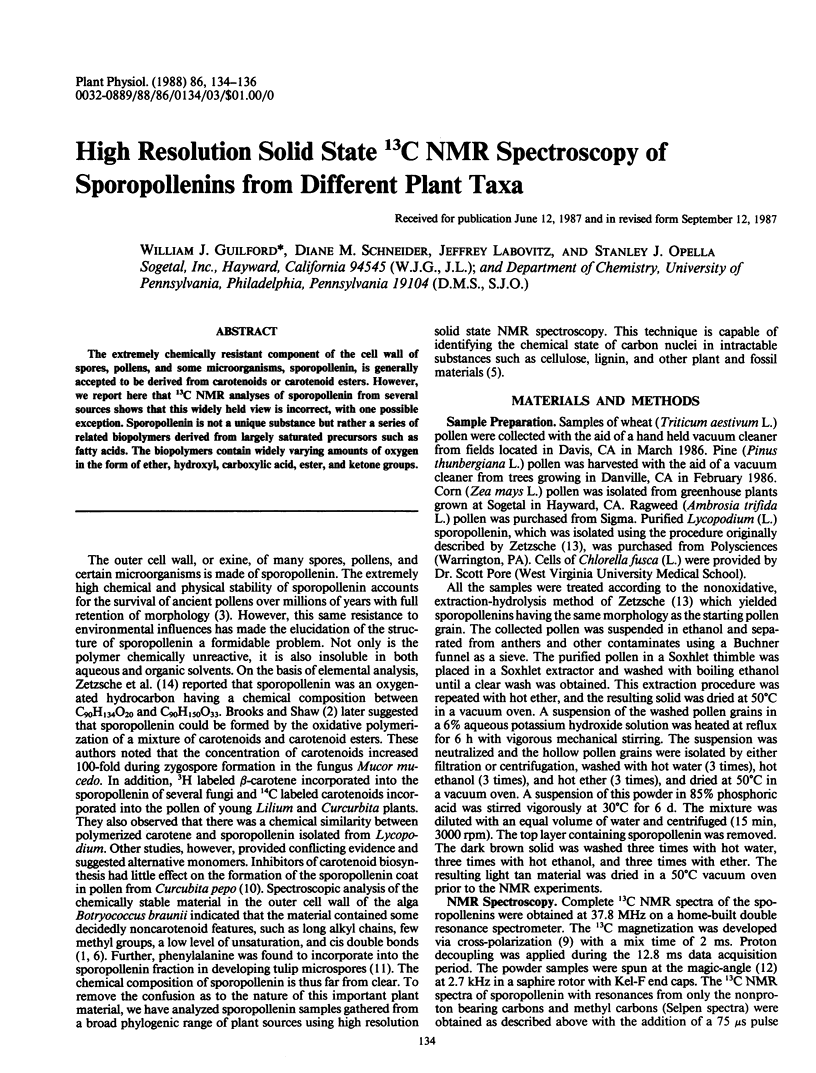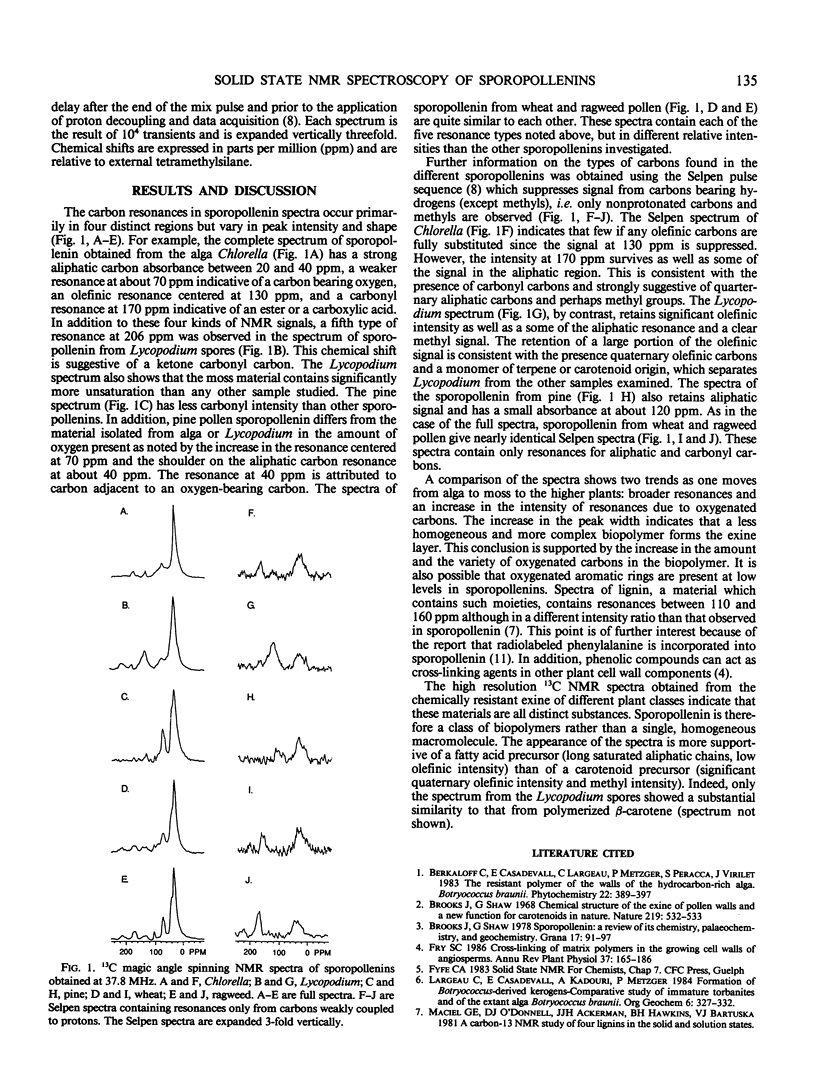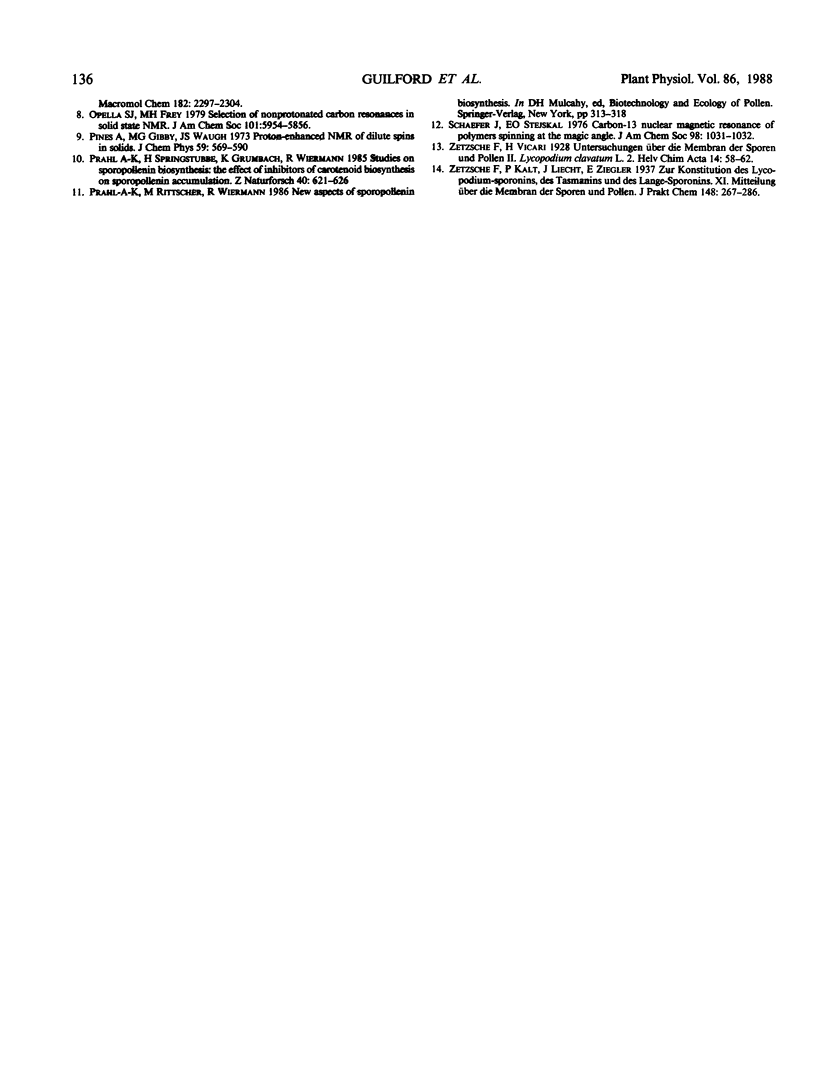Abstract
The extremely chemically resistant component of the cell wall of spores, pollens, and some microorganisms, sporopollenin, is generally accepted to be derived from carotenoids or carotenoid esters. However, we report here that 13C NMR analyses of sporopollenin from several sources shows that this widely held view is incorrect, with one possible exception. Sporopollenin is not a unique substance but rather a series of related biopolymers derived from largely saturated precursors such as fatty acids. The biopolymers contain widely varying amounts of oxygen in the form of ether, hydroxyl, carboxylic acid, ester, and ketone groups.
Full text
PDF


Selected References
These references are in PubMed. This may not be the complete list of references from this article.
- Brooks J., Shaw G. Chemical structure of the exine of pollen walls and a new function for carotenoids in nature. Nature. 1968 Aug 3;219(5153):532–533. doi: 10.1038/219532a0. [DOI] [PubMed] [Google Scholar]


